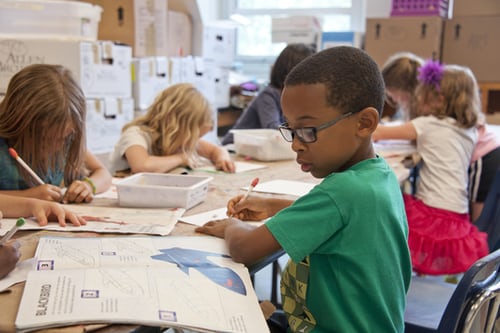How Artificial Intelligence Is Changing The Future Of The Education Sector
Guest Post by Artur Meyster
Artificial intelligence used to be a figment of our imagination or something we see in sci-fi movies. Now it is a part of our lives. This technology surrounds our lives, from smart sensors, automatic parking systems, and personal assistance. AI is also making waves in the education sector. The academic world is a lot more personalized and convenient courtesy of AI. Educational materials are now more accessible through computers and smart devices. Students do not need to be physically present as long as there is an Internet connection and computer. AI also plays other roles in education, such as administrative tasks automation, reducing the time spent on difficult tasks, and more.
1. Automating Administrative Tasks
AI automates administrative duties to speed up the task. Normally, educators spend time assessing homework, grading papers, and providing valuable responses to help students in need. This technology can be used to automate these tasks, especially if there are several tests. Professors will have more time to teach their students rather than grade tests. Software providers are constantly developing new ways to grade written answers as well as essays. Another department that benefits from AI is the school admission board. It can also be used here to automate the process of classification of paperwork.
2. Smart Content
Smart content is basically digital material created by AI. It also includes virtual content such as video lectures and video conferencing. Textbooks are changing for the better as AI systems make use of traditional syllabuses in creating textbooks for different subjects. Textbooks are now digitized with learning interfaces to help students in different grades. This system makes the contents of textbooks more comprehensible. It is also a lot easier to navigate with flashcards, chapter summaries, and practical tests. Other similar AI systems enable educators to create electronic curriculums. They can also make educational information on different devices. In many cases, they include audios, online assistance programs, and illustrative videos.
3. Personalized Learning
Personalized learning AI was first implemented on movie recommendations on platforms like Netflix. This same technology is used to teach learners. Normally, traditional systems do not cater to all students sufficiently. The curriculum is often built to suit around 80% of students. Those students always end up in the bottom 10% in the class. With AI, teachers aren’t replaced but they offer more to all students by giving personalized recommendations to every student. AI customizes assignments, final exams, and more to ensure that students are assisted properly.
Research has revealed that instant feedback can be helpful in tutoring. With AI-powered apps, the learners can get customized and targeted responses from teachers who in turn condense the lesson into flashcards and smart study guides. These tools can help them teach each student based on their challenges. Most of these methods are still new, but with time, they will become fully-fledged teachers.
4. Global Learning
With AI, education has no boundaries. Tech facilitates learning from any part of the globe at any time. Students can master fundamental IT skills with AI. In the future, there will be more courses available to help students learn. For now, some popular skills include coding and web development. Bootcampranking.com is an excellent resource to find coding lessons online.
5. New Efficiencies
AI is improving IT processes and now has new uses. For example, town planners can minimize traffic jams to improve pedestrian safety using artificial intelligence. In the same vein, schools can find the best methods to prevent students from going missing in crowds. It is also used to model complex data so data-driven forecasts can be created. Future planning is made easier with this system. It will make it easier to assign seats during different school programs and ordering food from cafeterias among other functions. This will reduce wastage and save the school money.
Conclusion
By 2021, AI use in education will increase by 47.5% according to a study. The entire education industry will feel the impact of this technology from the lower education levels to the higher learning institutions. It is expected to create customized tools and adaptive learning techniques to improve learning experiences. The use of AI may inform students of what their future career paths look like. Skills training is also made easier with AI and more is expected in the future.







